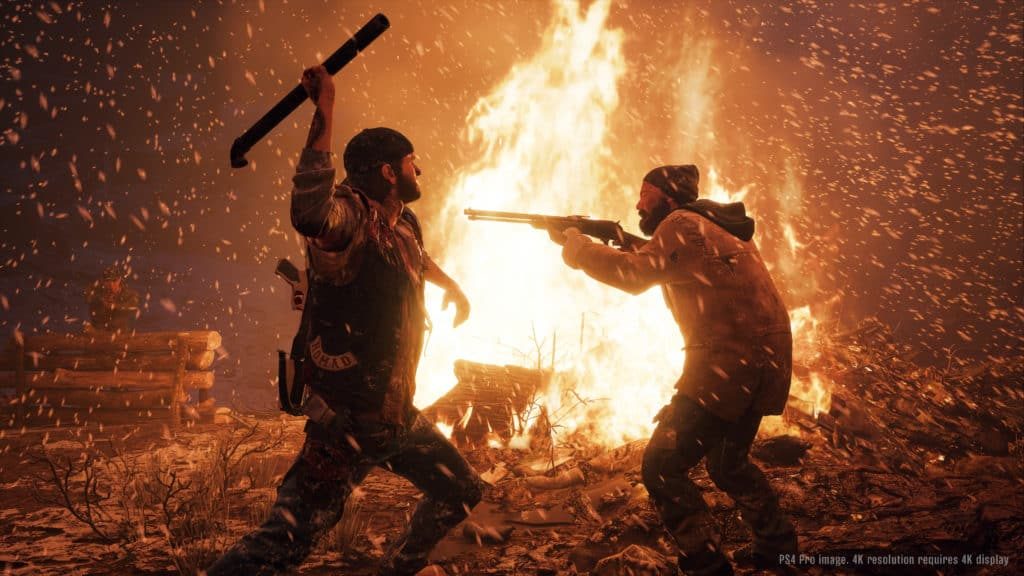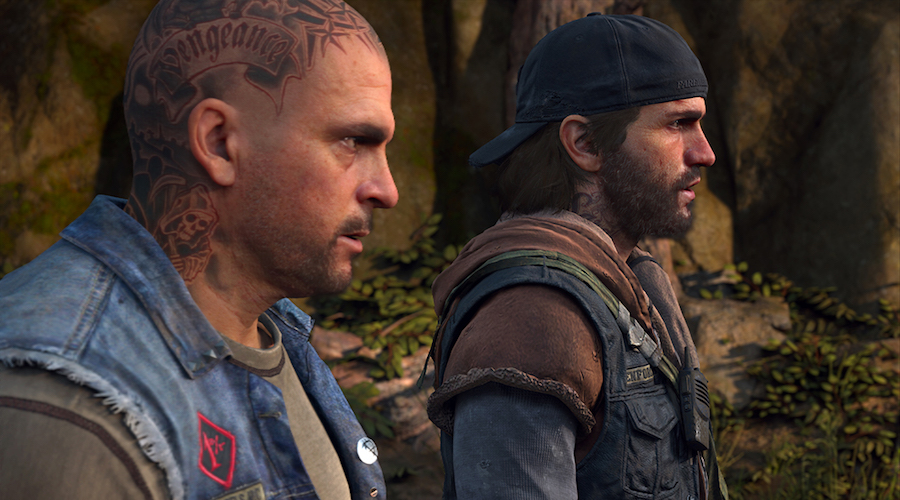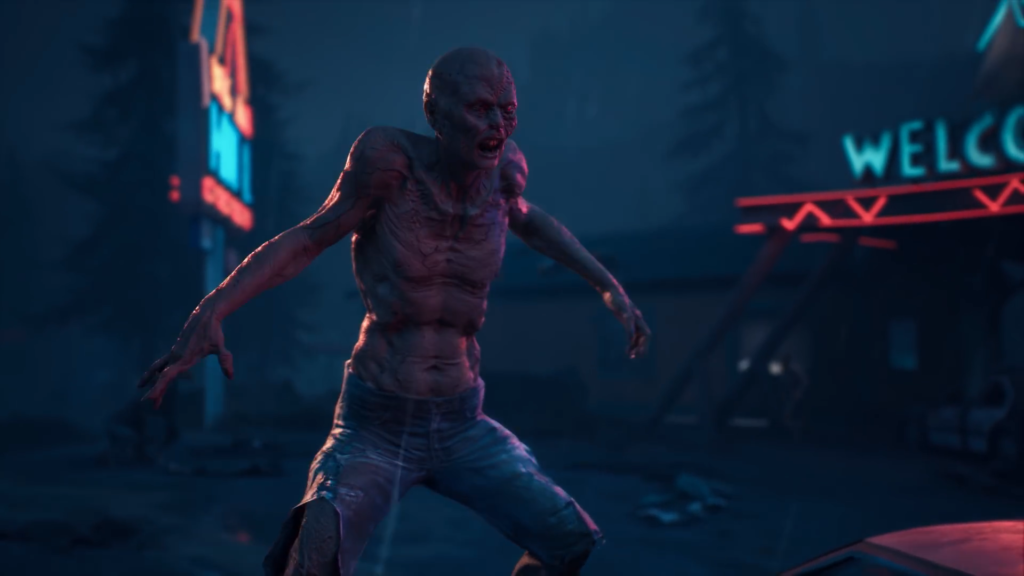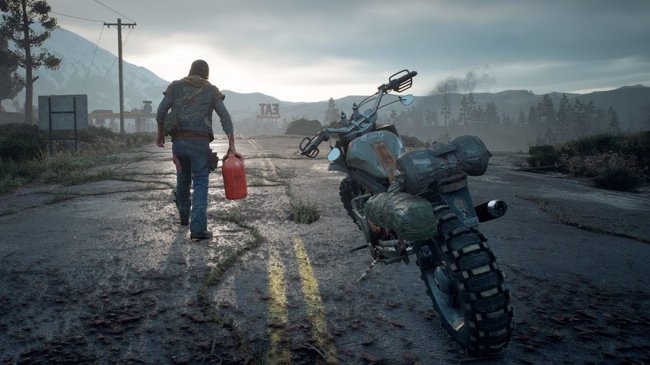
@assassinasan
It’s no longer easy for a Sony exclusive AAA title to reach a bar that’s set so high by games like God of War. While Days Gone didn’t meet that bar, it is still an impressive new IP executed by Bend Studio. This review will not come through a comparative lens to other Sony first-party exclusives because Days Gone has its own charm. I didn’t just like this game; I liked it a lot.
DEACON OF DESTINY
You play as a rugged biker dude named Deacon who is surviving in a post-apocalyptic open world in Oregon that’s infested by “freakers”. Freakers are humans infected by a virus that look and behave just like zombies. Two years after the outbreak, Deacon survives by taking on jobs in different camps, clearing out infested zones, upgrading and maintaining his motorcycle.
Considering Deacon was in a biker gang and the army prior to this apocalypse, it’s almost as if he was made for this kind of world. While most critics complained about his exaggerated potty mouth, I found his reactions to be quite realistic in navigating this cruel world. Sure, for the most part he seems cool, calm, and collective around others, but when he’s alone fighting Rippers, his murderous anger is apparent. Aren’t there moments when you’re alone and you sound a little crazy? Though Deacon didn’t stand out as much as a Nathan Drake or Joel, his character and respective voice acting (Supergirl‘s Sam Witwer) is good enough.

DAYS GONE COME
Days Gone opens with a cinematic scene showing the initial outbreak of infected humans. Deacon and his biker brother/best friend Boozer are trying to find a way to get Deacon’s injured wife Sarah some aide. Sarah is sent off into a helicopter and the game time skips two years later. From here, there’s no real sense of what Deacon and Boozer are endeavoring to do except to survive and figure out what happened to his wife. It’s not until the story progresses that Deacon’s aim has some substantial purpose, and everything introduced in the beginning comes in full circle.
In the meantime, Deacon comes across several camps around the world. Here he takes on odd jobs and turns in freaker ears, animal carcass, and fauna for credits and trust. In increasing trust and earning credits, you can purchase weapons, supplies and upgrades for his bike. The weapons you purchase at the camps are the only weapons you can store in your gun locker, as you can’t store weapons found in the open world.

FEAR THE CAMPING DREAD
Initially, this was frustrating because the weapons found in the open world were better than the one’s available in the gun locker; but eventually you gain enough credits to purchase much better weapons in the camps. To avoid further frustration, I kept the better weapons found in the open world equipped until I had enough credits to purchase better weapons. Each camp has its own currency, so you can’t earn credits in one camp and use those credits to purchase items in another camp.
Each camp also has unique weapons and bike upgrades available as each merchant has a different inventory. This may seem annoying on paper, but I found myself only wanting to purchase certain items anyway, so I focused on building credits and trust toward the camps that had the items I wanted. In a post-apocalyptic world, it would make sense that each settlement has its own self-sustainable currency; yet this notion can be quite vexing in the video game world. Let’s be fair though: the best weapons in the game are melee weapons that you don’t even need to buy.

GUNS OF ANARCHY
There is a variety of weapons, consumables, and explosives. More items become available for crafting as you progress through the game. The guns include marksman rifles, machine guns, pistols, SMG’s, and crossbows. The crossbows have special ammunition (e.g. fire, poison, electric) that you can craft. Melee weapons include machetes, sledgehammers, pickaxes, fire axes, bats, and fence posts. You can also craft mods into your melee weapons, which can create a spiked bat or axe fence post for example. You can craft throwable explosives like molotov’s, frag grenades, and pipe bombs.
Consumables include healing and stamina items. These weapons and supplies are all available in one weapon wheel that slows down time as you’re crafting or using them. This makes it accessible to craft and use items on the fly, even in the middle of a fight. However, the jam-packed weapon wheel can be troublesome since it’s easy to select an item you didn’t want to use by accident. In the middle of a firefight, accessing your weapon wheel requires quite a bit of dexterity.
Overall, the combat has satisfying melee combos and the third person gunplay is a bit clunky because almost all the weapons are unstable. It’s best to use a shot gun or machine gun to alleviate the clunk. There is also a cover system, which doesn’t feel good after playing The Division 2, although it’s sufficient enough for a game that isn’t a cover-based shooter.
SMOTHER NERO
Not only to you gain the ability to craft more items as you progress, but you also level up Deacon’s survival, melee combat, and ranged combat skills. You can also upgrade Deacon’s stamina, health, and focus bars. These can only be upgraded by clearing Nero Research Sites– camps that you have to clear out, activate a generator to unlock the door with the upgrade, and loot. Some of the Nero Research Sites are hidden in caves overrun by freaker hoards, some are protected by Rippers, and others can only be accessed by riding up a ramp and across a gap on a mountain.
What is Nero? They’re militarized researchers that are investigating the virus that caused this freaker outbreak. Besides Nero Research Sites, there are also missions related to listening in on conversations from the Researcher. These are always stealth sequences and you can’t kill any of the Nero researchers because they have some sort of impervious armor. Nero missions are key in the main story but there are plenty of other story missions along the way such as helping Boozer get out of a physical and mental funk, remembering old memories form Deacon’s past with Sarah, saving a young girl, clearing out Ripper camps, gaining trust with the Lost Lake camp, and taking on bounties. You gain progress toward each main mission, as they have tasks within them that can be completed in any order. Judging from the trailers shown before this game released, you’d think the story between Deacon and his wife would have some substance, but I found the bromance between Deacon and Boozer to be more convincing.

PAIN IN THE GAS
One of the staples of Days Gone is Deacon’s motorcycle, which is what you’ll be interacting with more than any other NPC throughout the entire game. I couldn’t help but think of how similar Deacon’s motorcycle is to the mount in Red Dead Redemption II, mostly because it’s always by your side (or technically by your bottom) and always marked on the map. The bike needs to be maintained via fuel management and repairs with scrap. Fortunately, a motorcycle is machinery and not a living creature, so the stakes of breaking your motorcycle are way lower. As you progress, you can upgrade your motorcycle at a camp’s mechanic, and you can also change its cosmetics.
This fuel management system is reminiscent of The Walking Dead: Survival Instinct, but at least in that game you could store several fuel cans. In Days Gone you must have enough fuel to get you to your next destination, or the next fuel station. Initially, I wanted to be able to store at least one extra fuel can because riding from point A to B gave me anxiety as I anticipated being stranded in the middle of the woods surrounded by freakers. In sitting with that anxiety, I quickly realized this is exactly why the fuel management system is so crucial to the immersion of Days Gone.
It’s not like you can bypass fuel management with fast traveling because doing so takes up way more fuel, while camp mechanics have only expensive fuel available. Fortunately, you can purchase a bike upgrade that has better fuel conservation. There are very few gas stations, but fuel is generously sprinkled around towns, Nero checkpoints, and camps on the map. Another benefit to manually riding to your checkpoint instead of fast traveling is more missions are likely to become available and you can come across random events in the world. Therefore, it’s best to minimize using fast travel as much as possible.
Traversing through rural Oregon on Deacon’s bike is beautifully terrifying. At moments you experience the serenity of a waterfall or the tranquility of the sun setting behind a mountain. Then as the sun sets you hear the groans of freakers and they become more active at night, and ride into a run-down town painted with blood. Supplementing the terrifying setting of post-apocalyptic Oregon is the sound design. Ominous music play when you have freakers around you and you get a different sound cue when you’re in the vicinity of a horde. You can hear the roars and groans of freakers in the distance, and it becomes especially intense when you’re around hordes.
DEAC’S ‘N FREAKS
There are more mutated enemies in Days Gone besides the freakers. There are also Breakers a.k.a. The Incredible Hulk zombies. They’re fast, strong, and take a lot of damage before going down. Then there’s Screamers, which are female freakers that unleash a piercing scream to attract hordes of zombies. Reachers are like the regular freaker swarms, except they have more health, HP, and speed. Days Gone takes a risk with including children freakers called Newts, and it doesn’t shy away from making you kill them. I appreciated this risk because most media outlets are too afraid of backlash to display how likely it is that you would have to kill infected children in this kind of world.
You can even fight infected and non-infected animals such as wolves (or Runners), bears (or Ragers), and crows/ravens (or Criers), cougars, and deer. I didn’t encounter a Rager until the end of the game, but it was so bad-ass seeing a bear with barbed wire tied around its body and a machete in its head. You can skin non-infected animals and bring their carcass to a camp for trust and credits. There are also human enemies called Marauders, Anarchists, and Rippers. These people are murderers and thieves. Rippers stand out the most as a cult of deranged, self-mutilating humans that worship freakers and spend their time killing, raping, and torturing others while on PCP.

HORDE WARS
Days Gone may not stand out as a game that does something different for video games or evolves any gameplay mechanic. However, the main aspect of Days Gone that helps it stand out are the terrifying but good freaker hordes. They range from hordes of about 30 freakers up to what seems like 500! Some of the bigger hordes can take up to 20 minutes to complete. You must approach these hordes with a plan, supplies, and ammunition.
It is ideal to scan the environment and lure them into explosives or funnel them into narrow caves and bridges. During the daytime, hordes are often dormant in caves, barns, abandoned trains, or somewhere away from the sun. This is the best time to tackle a horde all grouped up in one area so you can plan your attack, observe the environment for traps and explosives, set mines in the path you to lure them to, and attack them while they’re off guard. During the night time, hordes are traveling in a specific path, leaving you vulnerable to running into them as your traversing through the open world. Encountering a horde at night is more exciting because it often catches you off guard, and actives a fight or flight response in the player.

END OF DAYS
Like many open world games, Days Gone suffers from side activity fatigue. You’ll find yourself continuously clearing out camps, searching for clues in an area, and doing a bike chase. This format is no different from Ubisoft titles like Assassin’s Creed or Far Cry. Days Gone also suffer from some awkward facial animation, frame rate drops, long loading screens, and the occasional enemy attacking you while they submerged in a rock. None of these issues were game breaking.
Days Gone doesn’t do anything too different from other open-world AAA titles except for how you experience the hordes. Gameplay can become redundant, the story is a bit choppy with its distinctive progression system, very few characters are impressionable, and there are some performance issues. Yet, none of the game’s major issues took away from how much fun I had mauling freakers skulls into a wall, silently slicing a rippers esophagus, frantically dodging a bear’s claws, anxiously drifting down a windy road to get a fuel container, and especially luring a horde of 300 zombies into bridge littered with mines. If you’re the type of player who likes to rush to the finish line, I do not recommend this game. If you’re like me and you’re down for a long relentless journey, play Days Gone. 3.5/5 Bibles.
-Dee Assassina

